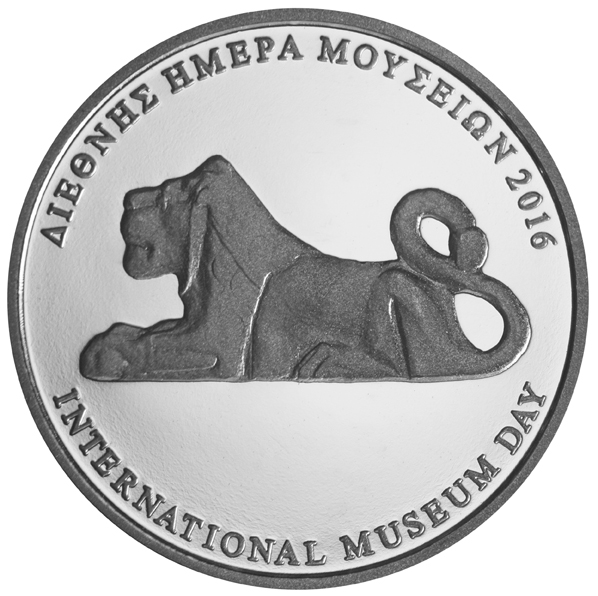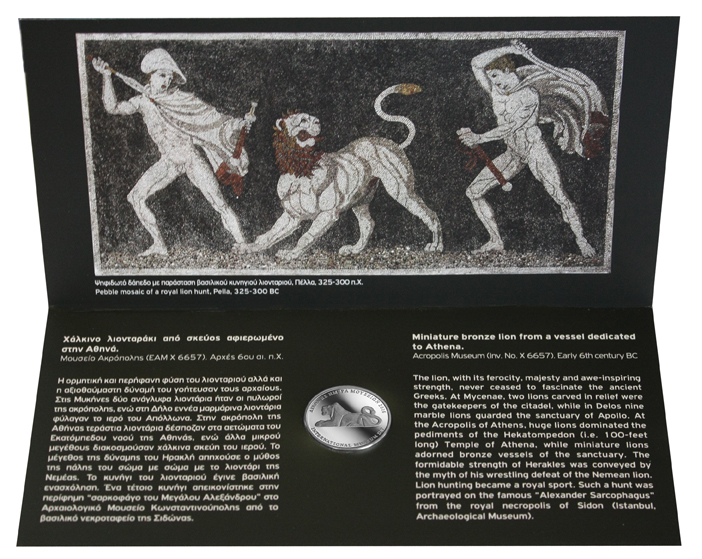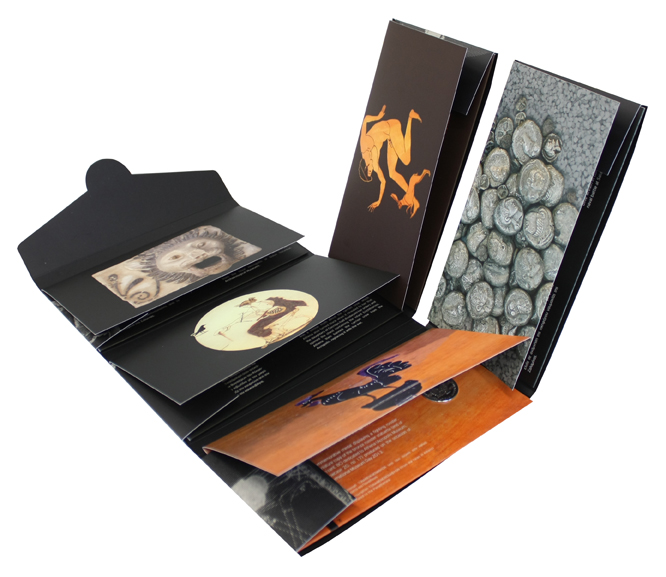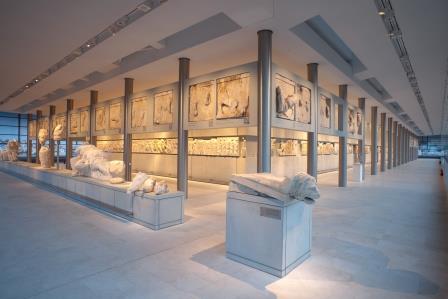18 May, 2016, the Acropolis Museum will commemorate this year's International Museum Day with a Lion.

Large lions dominated the pediments of the Temple of Athena, whilst smaller ones decorated copper vessels of the sanctuary.

There will also be a collectors wallet with five commemorative medals including the Rooster, the Hare, the Crow of the Citadel and the Lion.

On Wednesday 18 May, International Museum Day, the Museum will be open from 8 a.m to 8 pm and visitors will be shown a new visual production, the 'adventures of the Parthenon marbles' in the atrium, on the third floor.
There, visitors can also meet the archaeologists and museum host guides, presenting "the history of the Parthenon marbles in later years". These presentatins will be in English at 10 am and in Greek at noon, 5 p.m. and 7 p.m.
A maximum of 40 visitors per presentation and registration will be taken at the information desk at the entrance of the Museum.
Children up to 12 years and their guardians, and school groups will learn about the relationship of the ancients with Lions and other cats under the action "in the wake of the lion" through stories, and game creation.
Archaeologists and museum host guides will also welcome visitors onto mobile laboratories on the balcony of the second floor overlooking the Hall of the archaic collection from 12 noon to 7 p.m. where guests can participate in both Greek and in English.
For European Museum Night on Saturday 21 May 2016, the Acropolis Museum will host a concert in the courtyard.
At 9 p.m. the Concert Ensemble of String Theory will perform "a strange World" and "Cheap: low – high quality – fun." Chopin's polonaises will be performed next to Balkan music, compositions of Grieg beside fados, songs from the far East and from the repertoire of Argyris Bakirtzis and 'winter swimmers', as well as from unusual areas in Greek discography. Performers include: Argyris Bakirtzis (song, narration), Yorgos Paterakis (concept-orchestrations, piano), Evi Mazi (flute, vocals), Konstantina Kyriazi (violin).
For more information visit www.acropolismuseum.gr/en

 Neil Kinnock once famously described the Parthenon with its missing sculptures as “a gap toothed smile”. This description applies no less to the current display of the
Neil Kinnock once famously described the Parthenon with its missing sculptures as “a gap toothed smile”. This description applies no less to the current display of the 



